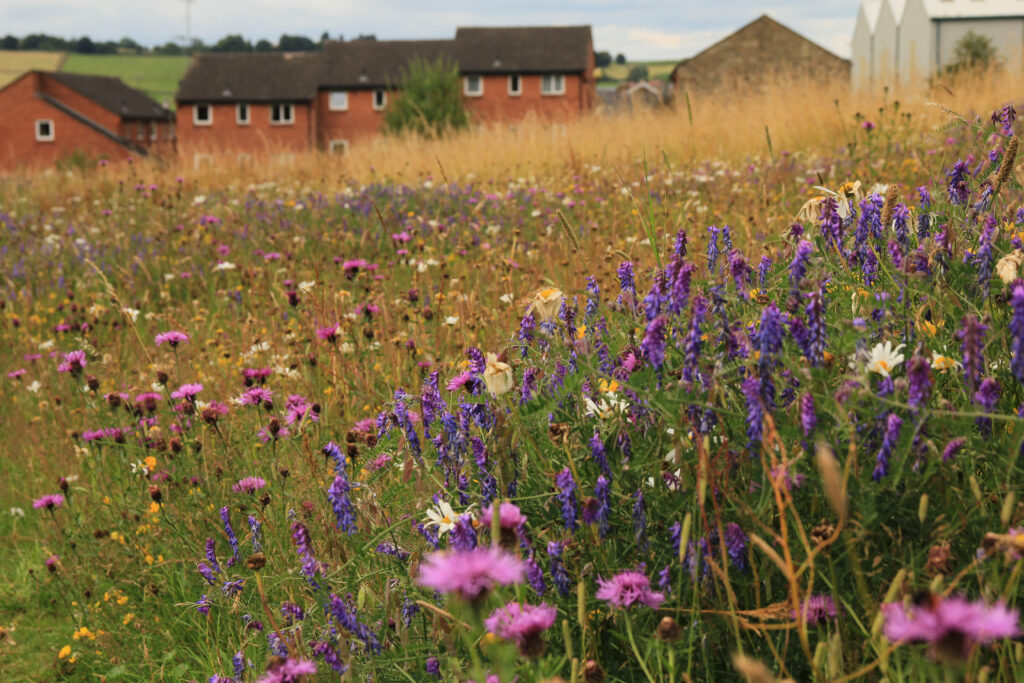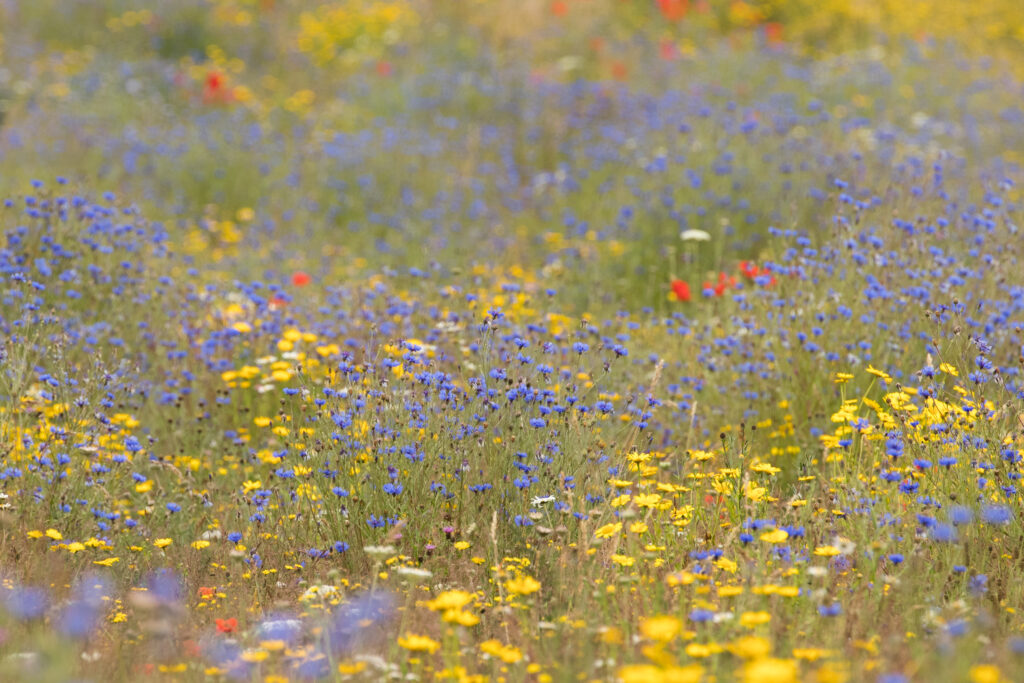Wildflower meadows provide vital habitat for a huge array of wildlife. However, the UK has lost 95% of it’s wildflower meadows since the 1940s. While most people think of meadows as being large, mini-meadows in gardens and smaller spaces are no less important, providing important places for pollinators to rest and feed.
Things to consider…
- They are great for more than just pollinators! Wildflower meadows are a fantastic way of helping pollinators like bees and butterflies. But they are home to more than pollinators! Other insects will make their home amongst the plants and this in turn will attract predators like blackbirds. Meadows are also great for reptiles. They will bask in the open areas and hide away under the vegetation if disturbed.
- When it comes to meadows, size isn’t everything. Most people think of meadows as big open spaces, but small meadows can be great too! You don’t need rolling fields to have a healthy wildflower meadow. In fact, a thriving mini meadow can be better for wildlife than a poorly managed field. A lot of the techniques for creating and managing a meadow are similar for both big and small areas.
- Wildflowers can be picky. While wildflowers look fantastic and are a great way of helping wildlife, they can take a lot of work! Most wildflowers prefer nutrient low soil. They also prefer sunny areas that are mostly well-draining. Make sure you pick a good spot for your meadow and take some time to see what is already growing there..
- Pick a mix of plants. When you are creating your own wildflower meadow, it’s important to pick a range of native plant species. This makes your meadow beneficial to a wider range of wildlife. It also means that you are more likely to have flowers out for more of the year. This increases the amount of time your meadow is helpful for wildlife.
- Grass is important too! It’s not just the wildflowers that make meadows good for wildlife. Several species of solitary bee make their homes in areas of short grass. Long grass creates shelter for insects, mammals and reptiles to move around. It also creates some taller habitat. This is great for flying insects like beetles and butterflies to land on and spiders to spin webs in.
- Remove any cuttings. An important part of maintaining a meadow is cutting the growth back. In most cases, cutting in late summer and again in late winter/early spring works well. After cutting, make sure to rake off the cuttings. This prevents them decomposing back into the ground and adding nutrients.
- Preparation is key! Preparing to create a new wildflower meadow takes a bit of work. If you are sowing seeds, you’ll need to scrape most of the top soil off to give the seeds somewhere to take. Avoid scattering the seed on top of grass as they are unlikely to grow and will probably get eaten by birds! Your meadow may look a bit bare in the first year or two so don’t worry if you don’t see much growth.
- Meadows work best with surrounding habitat. It’s useful to think about how your meadow fits with nearby wildlife features. Trees and hedges all provide shelter for birds and pollinators visiting the meadow. Meadows can also create corridors for wildlife to move around through. They create shelter for amphibians moving between ponds or water. Meadows also offer areas for small mammals to move through without being too exposed.
Useful links



- The Wildlife Trusts have a short guide on growing a mini wildflower meadow. The guide is ideal for smaller spaces or gardens and is a good place to start.
- Plantlife have a fantastic website. It has a wildflower species database as well as lots of great planting tips. They also have a brilliant site dedicated to wildflower meadows. The Meadows’ Hub is a fantastic place for guidance on creating and managing meadows of all sizes.
- This video is a compilation of presentations by Butterfly Conservation. The session is on meadow creation and management for butterflies and moths. The workshops were delivered in Irvine, Glasgow and Edinburgh as part of their Helping Hands for Butterflies Project.
- Buglife have a useful hub on making a community meadow. Down the right-hand side of the webpage they have links to useful documents with information such as: creating and managing meadows, funding your meadow and the wildlife you might attract to your meadow.
- The RSPB have a useful step by step on how to create a wildflower meadow. The guide includes suggestions of good species to look out for in seed mixes.
